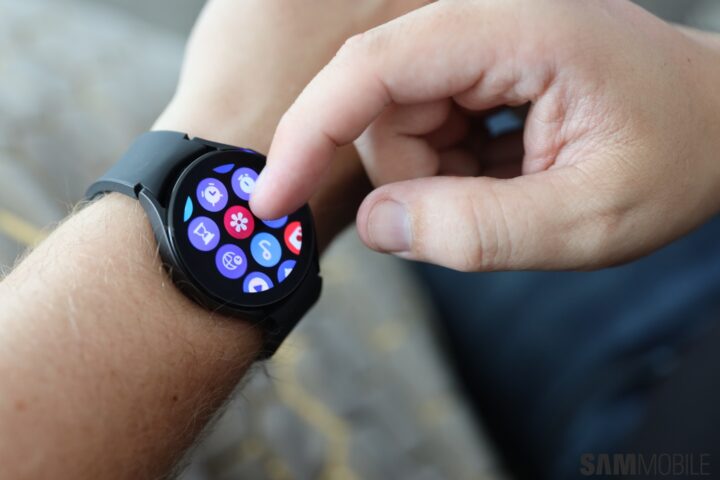Samsung may be phasing out its Classic series of smartwatches this year, which could mean the end of the physical rotating bezel. Sad news for Classic smartwatch fans, but perhaps the virtual rotating bezel used by non-Classic Galaxy Watch 5 models will remain a part of the experience. My question is, should it?
The purpose of the Classic’s physical rotating bezel is to provide a tactile feedback feel when navigating the UI and to allow use of said UI without leaving smudges and fingerprints on the circular screen. .
The virtual rotating bezel has the same code underneath, and so it works the same way, except it’s touch sensitive and it doesn’t have the critical component, i.e. the physical rotating ring surrounding the screen.
And as “cool” as it may be from a purely technical point of view, Samsung’s virtual rotating bezel falls short of its physical counterpart and appears more like a gimmick than a central component of the product. It’s an alternate method of UI navigation, sure, but it’s not necessary or nearly as useful as the physical bezel.
Using the virtual bezel on a Galaxy smartwatch does not provide tactile feedback or prevent smudges on the screen. More so, it’s arguably no faster or more convenient than the conventional One UI Wear method of navigating using familiar keys and swipe gestures.
I’d gladly swap the virtual bezel for more active pixels
Offering a simplified method of navigating the user interface can be a benefit in itself. But could there be other benefits to removing the virtual bezel feature from the Galaxy Watch series?
Well, ditching the virtual bezel altogether may allow Samsung to adopt a more full-screen design with thinner display edges and more active pixels. At the very least, it could allow the company to scale down the bezels without worrying about how that might affect the functionality of the touch-enabled virtual bezel.
Also, the virtual bezel doesn’t always work as expected, and in the past Samsung has had to spend time and resources fixing bugs and unwanted behavior. If anything, maybe Samsung should have done away with the virtual bezel before it considered ditching the classic formula.
All in all, I often wonder if the virtual bezel is worth it. It makes sense to stick with it for as long as the Classic series is viable. The code is there, so why not use it?
On the other hand, without the Classic Series, the virtual bezel starts to look like the remnant of something bigger. Or a somewhat unnecessary addition that could put the brakes on valuable development. It might be time to ditch the virtual bezel and focus on improving other arguably more critical areas of Wear OS and One UI.
What’s your take on Samsung’s smartwatch glasses? Do you use virtual glasses? And if so, how important is it to your user experience? Leave a comment below.
Join SamMobile’s Telegram group and subscribe to our YouTube channel for instant updates and in-depth reviews of Samsung devices. You can also subscribe to receive updates from us on Google News and follow us on Twitter.

